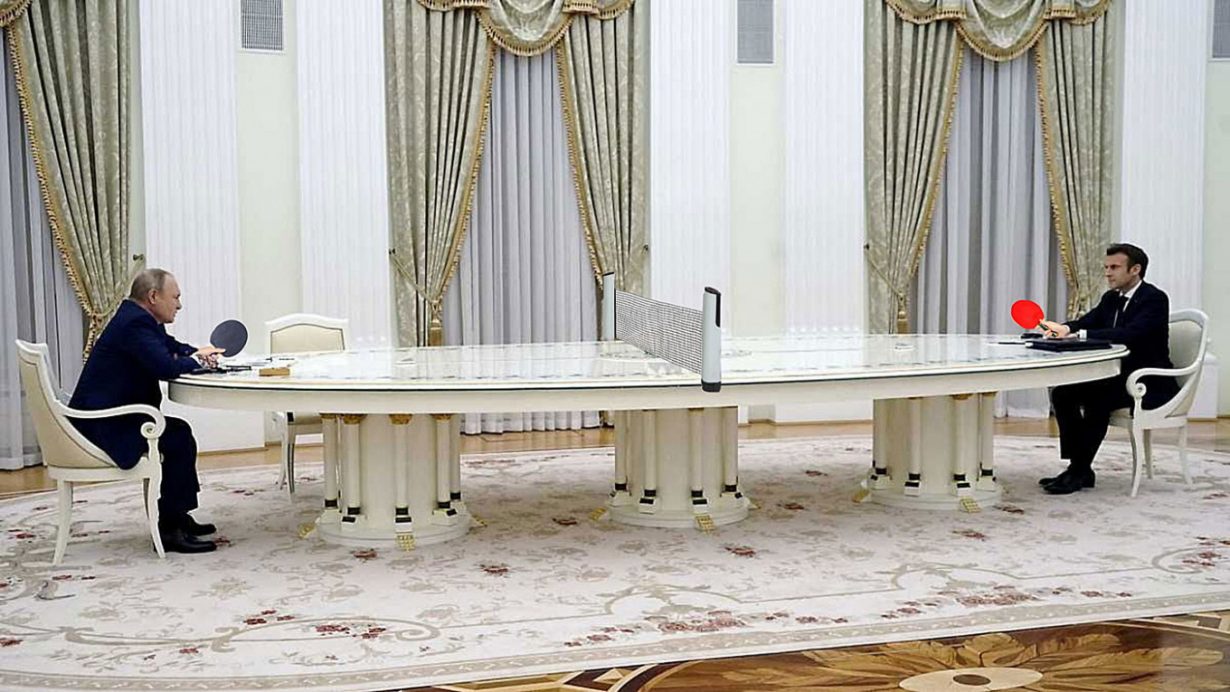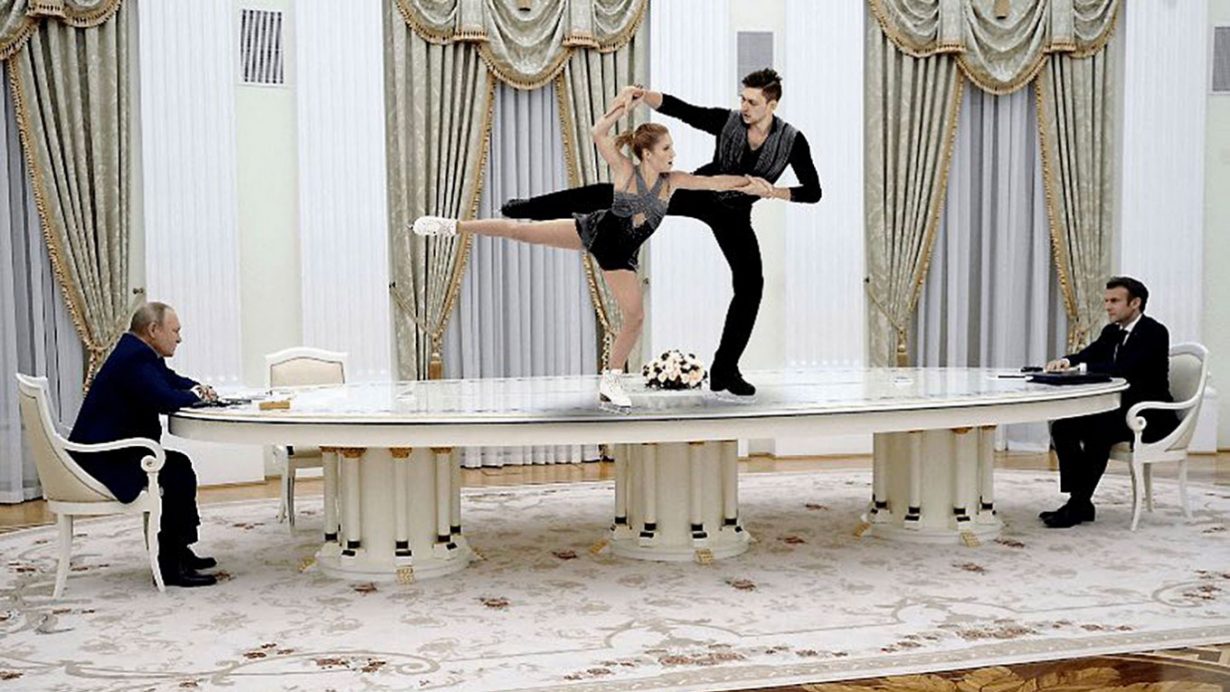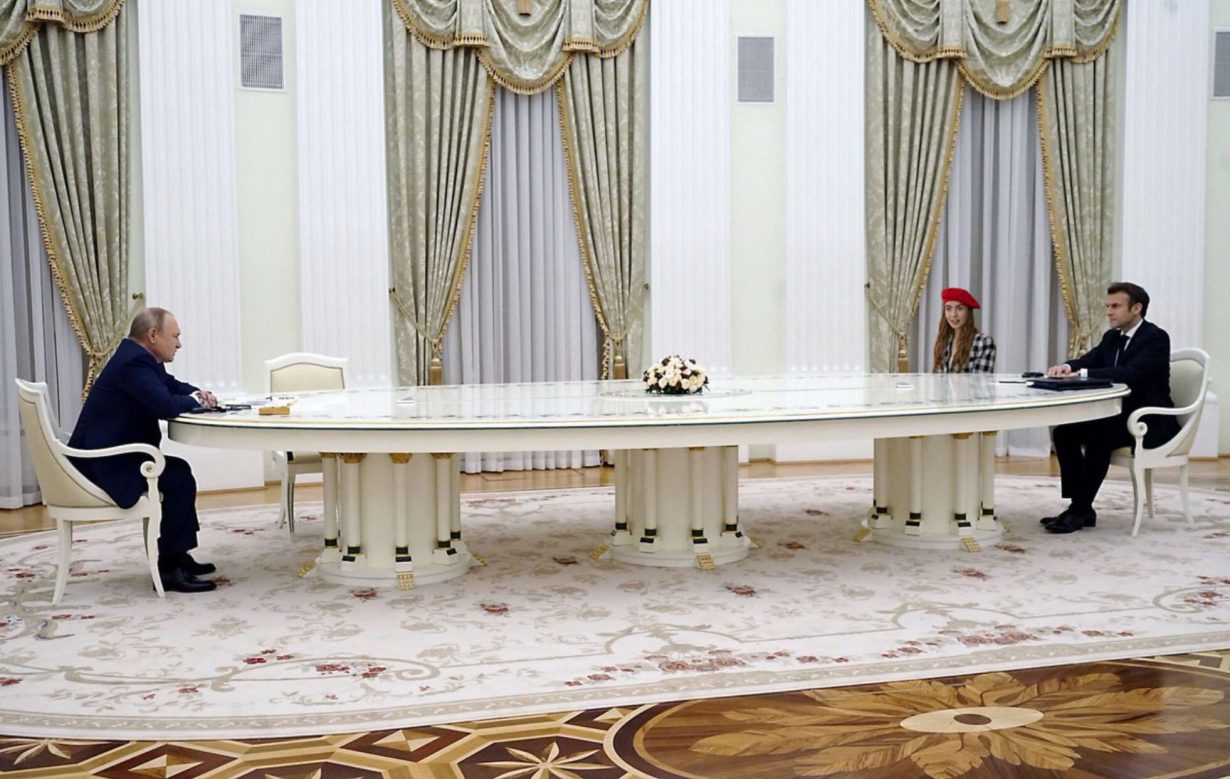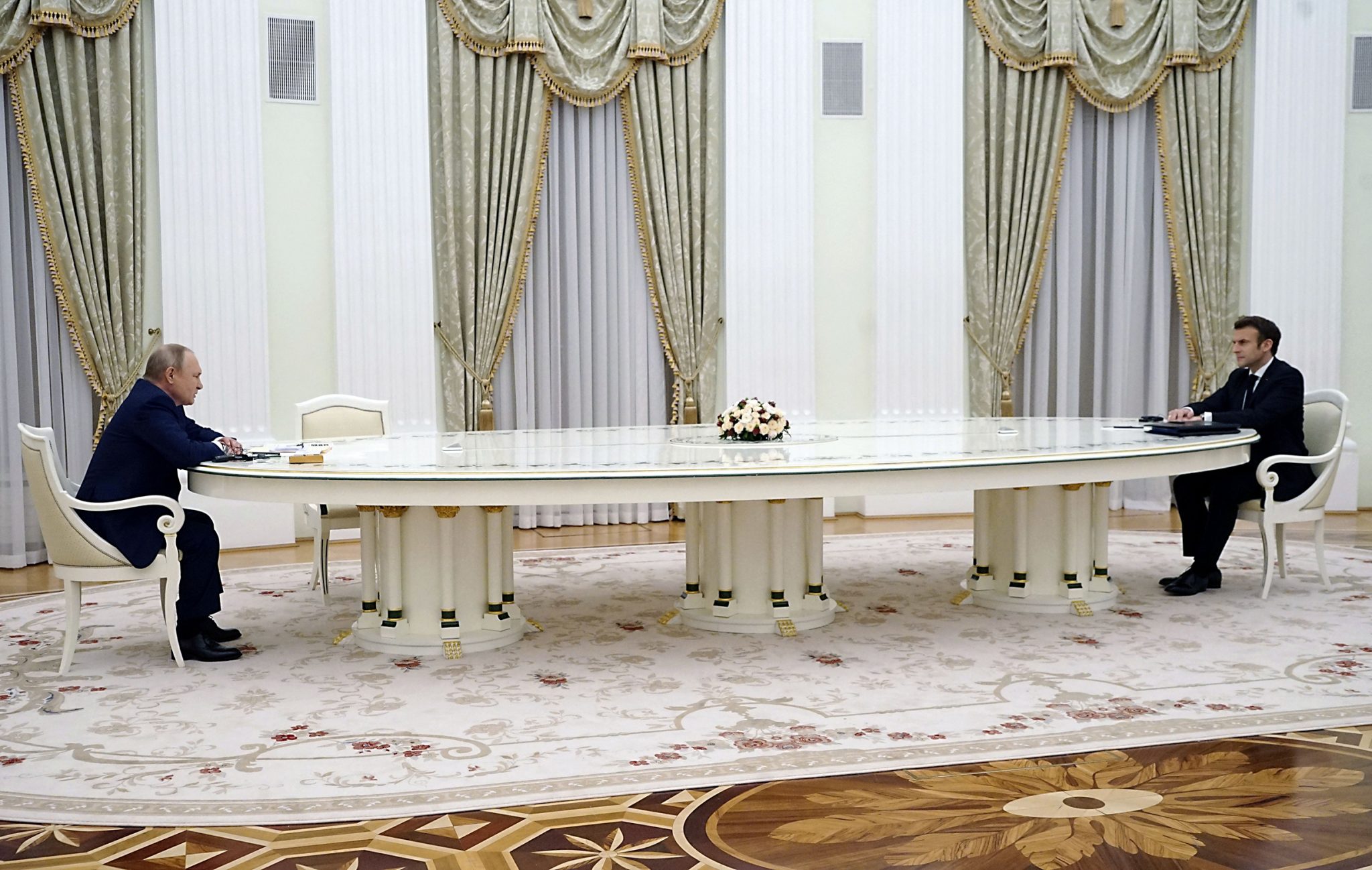As the Ukraine crisis reaches fever pitch, the Russian president’s attempt at visual powerplay goes awry
During lockdown, a friend of a friend met her dates at the public ping-pong table of a nearby park. A standard-issue ping-pong table is 274 centimetres long, so just a bit more than the social distancing measures required at the time. It was something to do, it was safe, and it made sense of the distance enforced upon everyone then. It was fun and funny and, in a way, made the distance feel less pronounced, which seemed like a very human desire.
Distance, in the past couple of years, has come to be a form of narrative to me. I can’t stop charting it – how uncomfortable people may be as they move through the world, how they cover their hands with their sleeves to press a button on the train or the pedestrian crossing, how they are around others. And then I saw the photo released last week from a meeting between Russian president Vladimir Putin and his French counterpart Emmanuel Macron. Newspaper coverage of the meeting to discuss the escalating crisis on the Ukrainian border appeared illustrated with a photo of the men seated at opposite ends of a four-metre-long table.

The memes swiftly followed: the entire cast of Leonardo da Vinci’s Last Supper (1495-8) seated between the two suited men; a pair of ice skaters (presumably from the Winter Olympics) glide across the glass table top; the still image stretched into an animation in which the table goes up and down like a seesaw (a metaphor, a Twitter user pointed out, for the pendulum swinging between war and peace). The mockery was to be expected: the internet is quick to pounce, quick to point out the ridiculous, quick to poke fun at systems of representation when they clearly fail.

Days after the Putin-Macron meeting, it was reported that the oversized table treatment was Moscow’s retaliation since the French president was not willing to undertake a COVID-19 test at the airport for fear of giving Russian authorities access to his DNA. If it’s paranoia, then it’s matched: Putin has famously been incredibly cautious with COVID-19 protocols; Macron’s DNA (I presume, though I admit I haven’t watched enough movies to know whether this is true) could probably be collected from a stray hair. But if it’s powerplay, it totally flatlined.
Putin leans on the table, his back at an angle, his hands resting on top. Macron seems more controlled, his posture straight, elbows at a 90-degree angle. So far so serious, and yet the effect is of Thumbelinas who have crashed into a world where nothing is the right size. The long oval table is white, covered in glass, and rests on three pillars, each of which is ringed with smaller faux-Corinthian columns. There’s a bouquet of tea roses in the middle, which looks so small I have to Google to check if miniature roses are a thing (they’re not). The colossal table rests on a light, powder-coloured floral rug; behind are three floor-to-ceiling windows covered by gilded curtains. The pink and gold colour scheme has a dollhouse feel – perhaps not what Putin intended.

Scale is a cliché of power. Like huge thrones, like giant palaces, like the massive halls of parliaments and national assemblies. That power is asserted visually is an argument well synthesised by Walter Benjamin in his 1935 essay ‘The Work of Art in the Age of Mechanical Reproduction’, where he writes about the way fascism logically leads to an aestheticising of politics. It was known and used much before Benjamin’s formula – ruler portraits are some of the oldest imagery we know – but age-old wisdom about the aesthetics of politics is loosened around the edges by the scornful distribution of images like that of Putin and Macron.

Reading the news online, photo editing can sometimes be a wink to the reader, almost subversive – there’s no need to illustrate an article about parties at 10 Downing Street with a photo of Boris Johnson going for a morning run in his shorts, but I am thankful to the photo editor who opted for that one. Sometimes it may expose something very real. If the imagery of power builds its own system of meaning then there is also a parallel system of image distribution that lingers on the weird, the unexpected, the result of the over-documented and the overexposed. Where images used to be iconic because they were singular (think Alfred Eisenstaedt’s V-J Day in Times Square in 1945, the man standing in front of tanks in Tiananmen Square, Tommie Smith and John Carlos raising their fists in the Black power salute on the 1968 Olympic podium), they are now often memorable because they are so recognisable – because of how they move online. To move an image through this parallel system of disdain is to offer a moment of rejecting recognisable, established, and mostly dangerous systems of power.
I come to photographs like that of Putin and Macron with a slight sense of anxiety. It’s my fear of the overreach and looming mishandling of power (a fear too of the brand of masculinity that commissioned a four-metre table to begin with). I look at that image of Putin and Macron, and look again, and all I can think is, well, that looks weird. And to circulate the weirdness, to point it out, to dwell on it, to laugh at it on Twitter, is to pick holes in established systems of representation; it’s a way of facing power, a small comfort and a smile.
